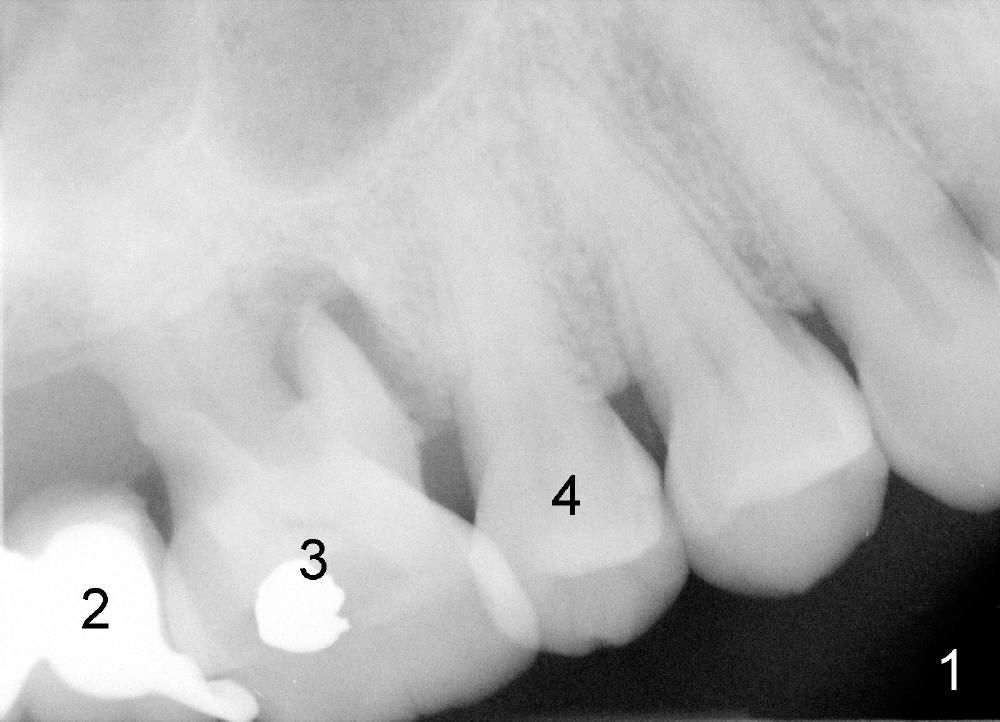
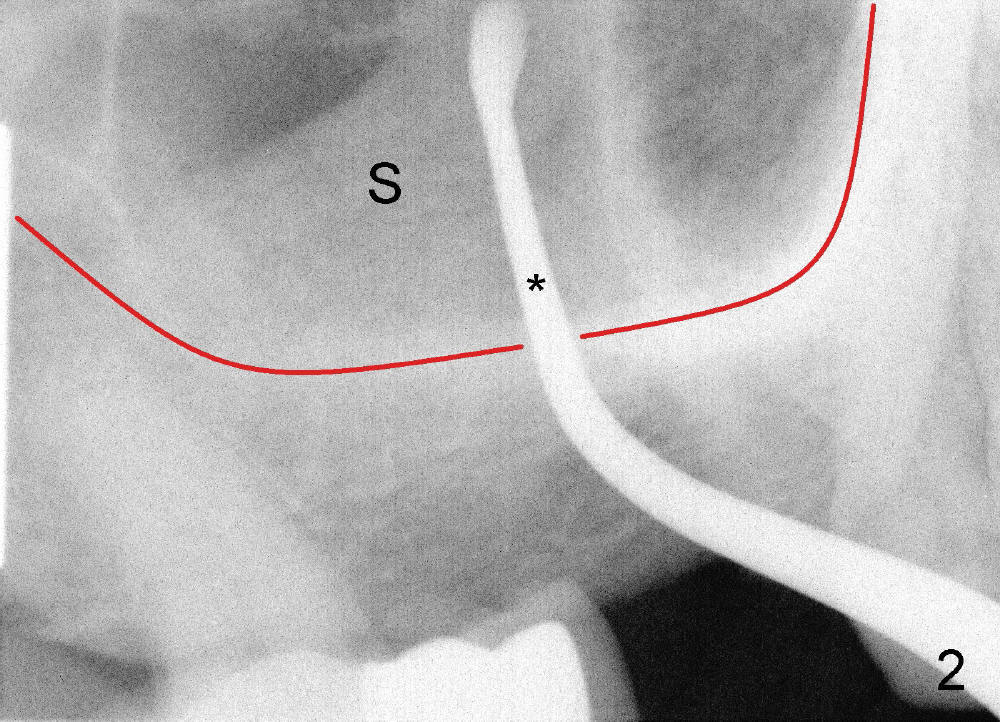
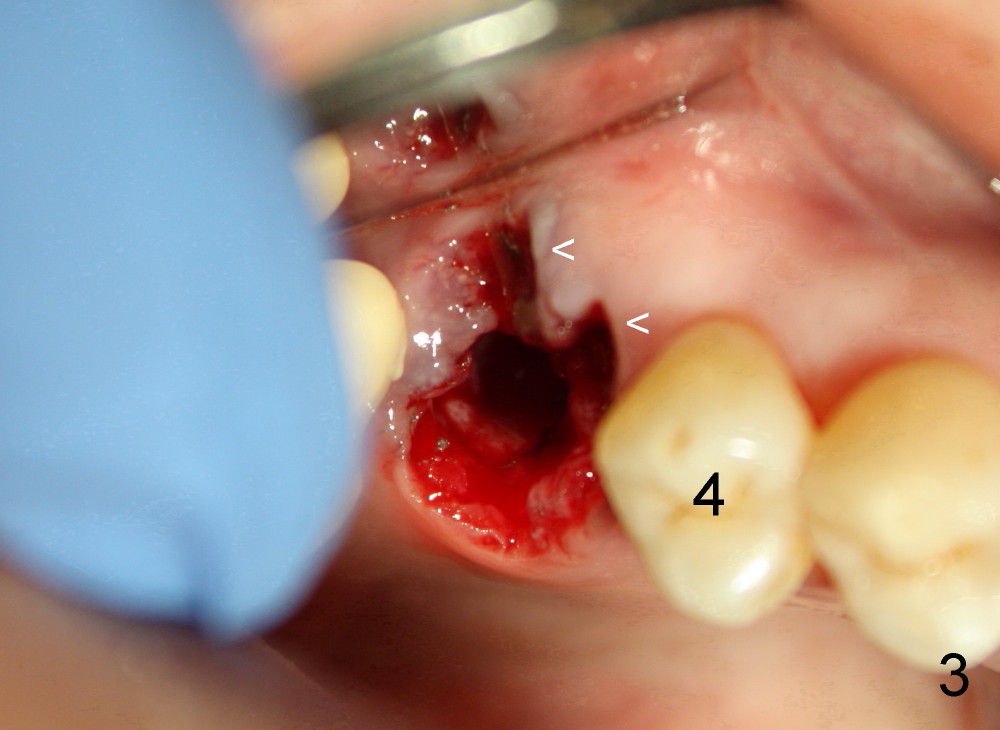
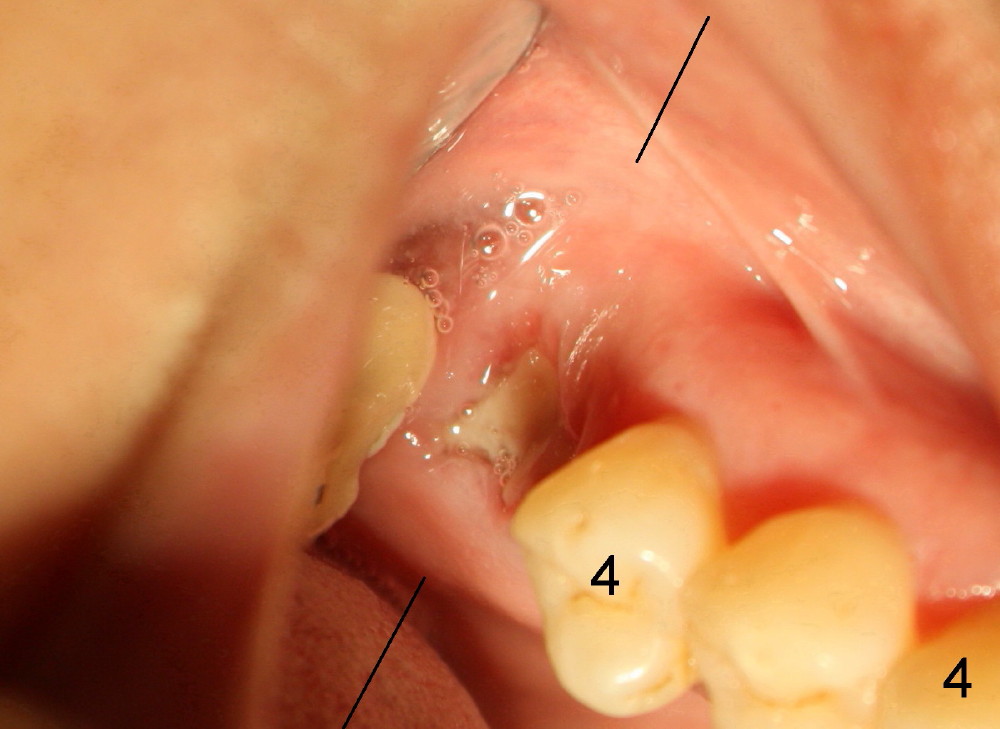

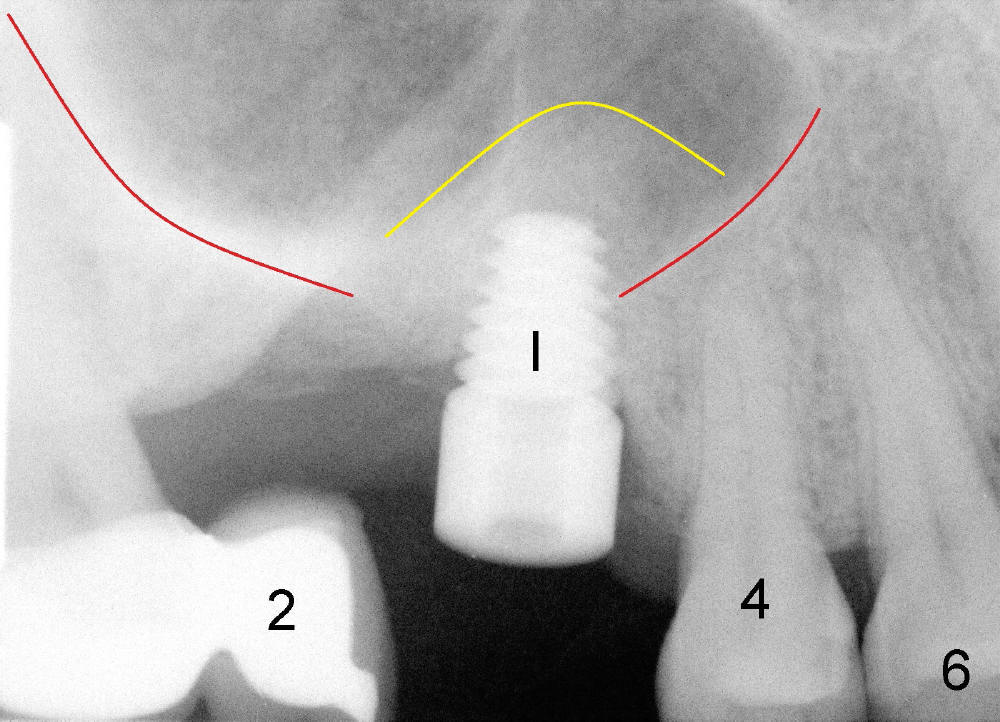
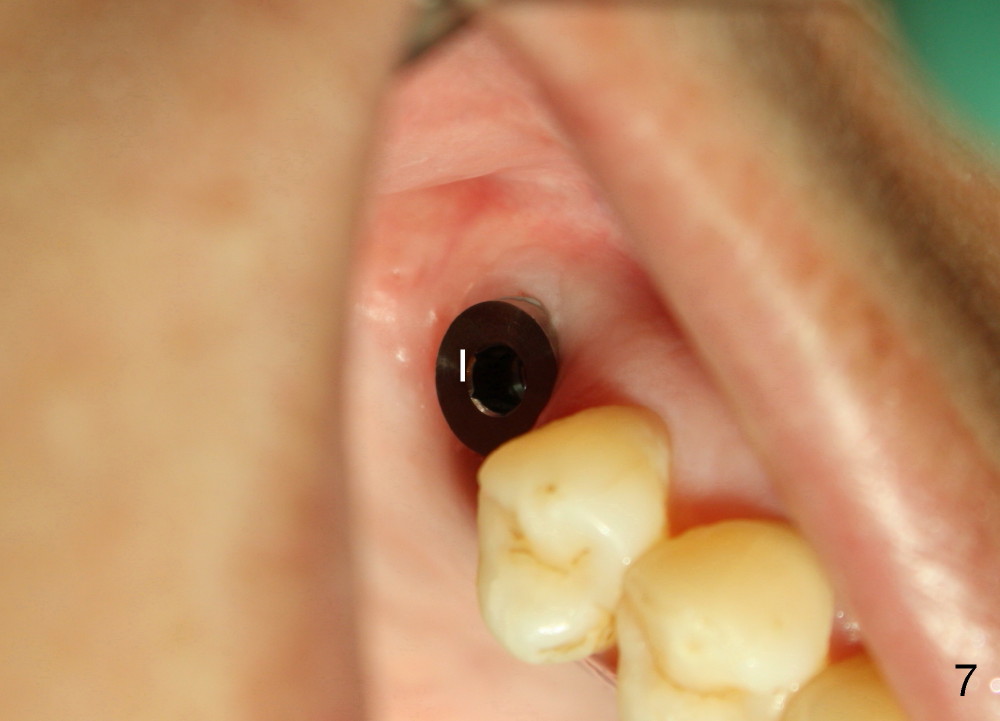
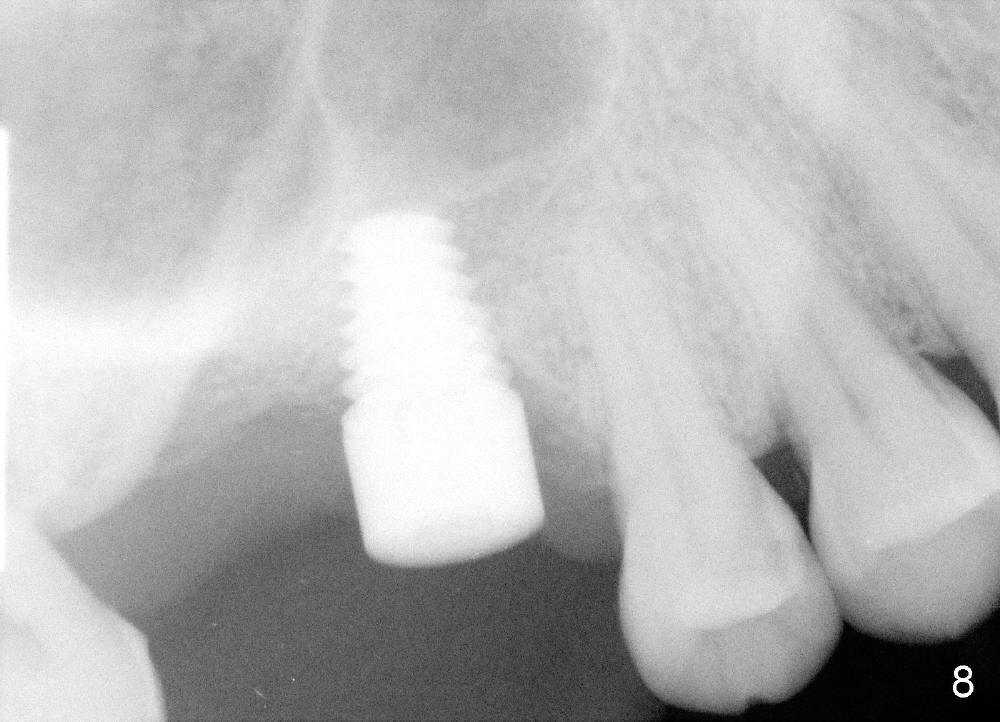
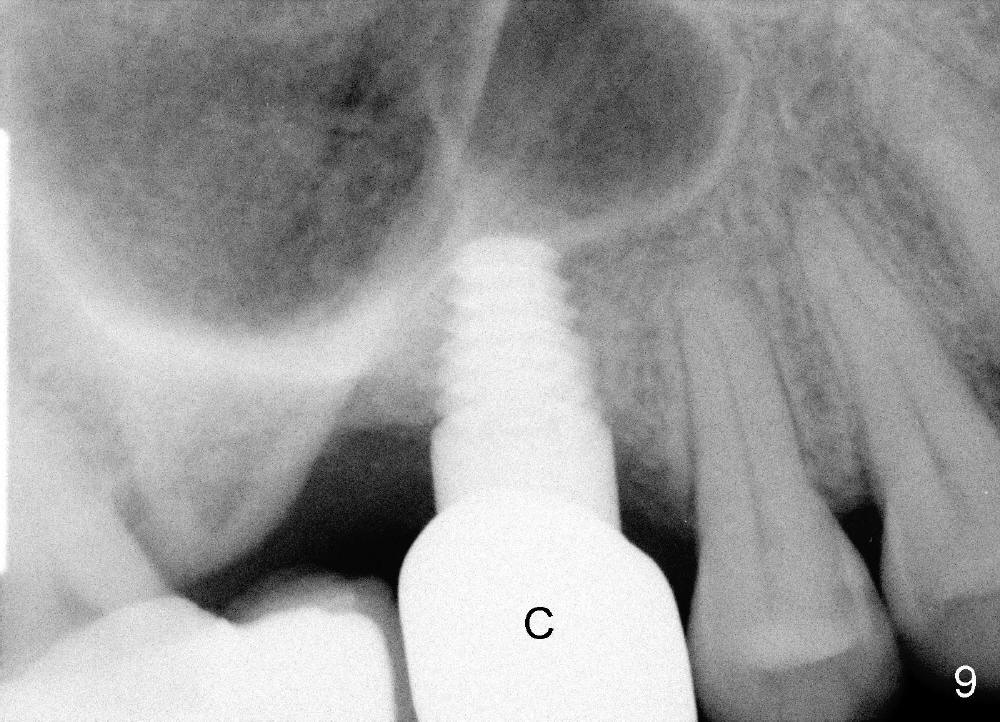
 |
 |
 |
 |
 |
 |
 |
 |
 |
One Set of Dentures Fits All
One old couple went to a restaurant for dinner. The waitress noticed that while the wife was enjoying the meal, the husband was watching. "Why are you not eating?" she asked him. "She needs to return the dentures to me before I can eat".
Almost all of us have good teeth when we are young. Why do some of us lose teeth and have to wear dentures when we are getting old? In my observation, people who have lost and are losing teeth are those who are scared of dentistry. When we have small cavities, fix them as soon as possible. If the teeth cannot be saved, take them out and replace them with implants. When properly done, dentistry is not so bad.
Mrs. Chen is a typical fearful patient. So her teeth are not so good. She has lost 5 teeth. Four of them are on the bottom and replaced with a partial denture. The last lost tooth is on the top (Fig.1: #2) and replaced by a bridge. One of the supporting teeth for the bridge (#3) is losing its battle. Mrs. Chen is in her fifties. In this speed, she may lose all of her teeth in her seventies or eighties. She feels hopeless. But with husband's encouragement, she wants to avoid the destination of wearing full dentures in the future. They plan to restore all of missing teeth with implants one by one. They want to enjoy dinner together when they get old.
The tooth #3 had had severe infection. When the tooth was extracted, the socket was communicating with the sinus (Fig.2: S; * is a dental instrument poking into the sinus). The red line represents the bottom of the sinus. The gums on cheek side were in bad shape (Fig.3 <) . In one week the wound was healing nicely (Fig.4).
CT taken less than a week after extraction shows that the bone is wide (Fig.5 (cross section of the upper jaw bone as indicated by lines in Fig.4) between white >), whereas the height is limited (between yellow >). A wide, but short implant is planned (as shown in Fig.5 white box: 6x11 mm). The top end of the implant is protruded into the sinus, but still within the sinus membrane (soft tissue, between pink and red outlines).
One month after extraction, an implant is placed (Fig.6: I, as planned). In fact with proper manipulation (sinus lift), bone is pushed upstairs into the sinus space with the implant (yellow outline as compared to original sinus floor (red outline)). So the top portion of the implant is not nude. Instead it is covered by the bone.
How is Mrs. Chen doing after implant surgery? She feels a little pain when numbness wears off. But next morning she feels fine. There is no nasal bleeding either after extraction or implant placement. In three and half months, she returns for cleaning. The gums around the implant (Fig.7 I) are healthy. The implant is stable clinically and in X-ray (Fig.8). We are so happy that we go ahead to make a new tooth for her. She is pleased, too, and asking "can we place two implants next time?" Fig.9 shows the new tooth (crown, C) in her mouth for six months. She is planning to have more implants soon. In all, implant surgery is not so bad. Implant teeth last long and protect our natural teeth. So that we do not have to share our dentures when we get old.
Xin Wei, DDS, PhD, MS 1st edition 02/24/2013, last revision 12/28/2013